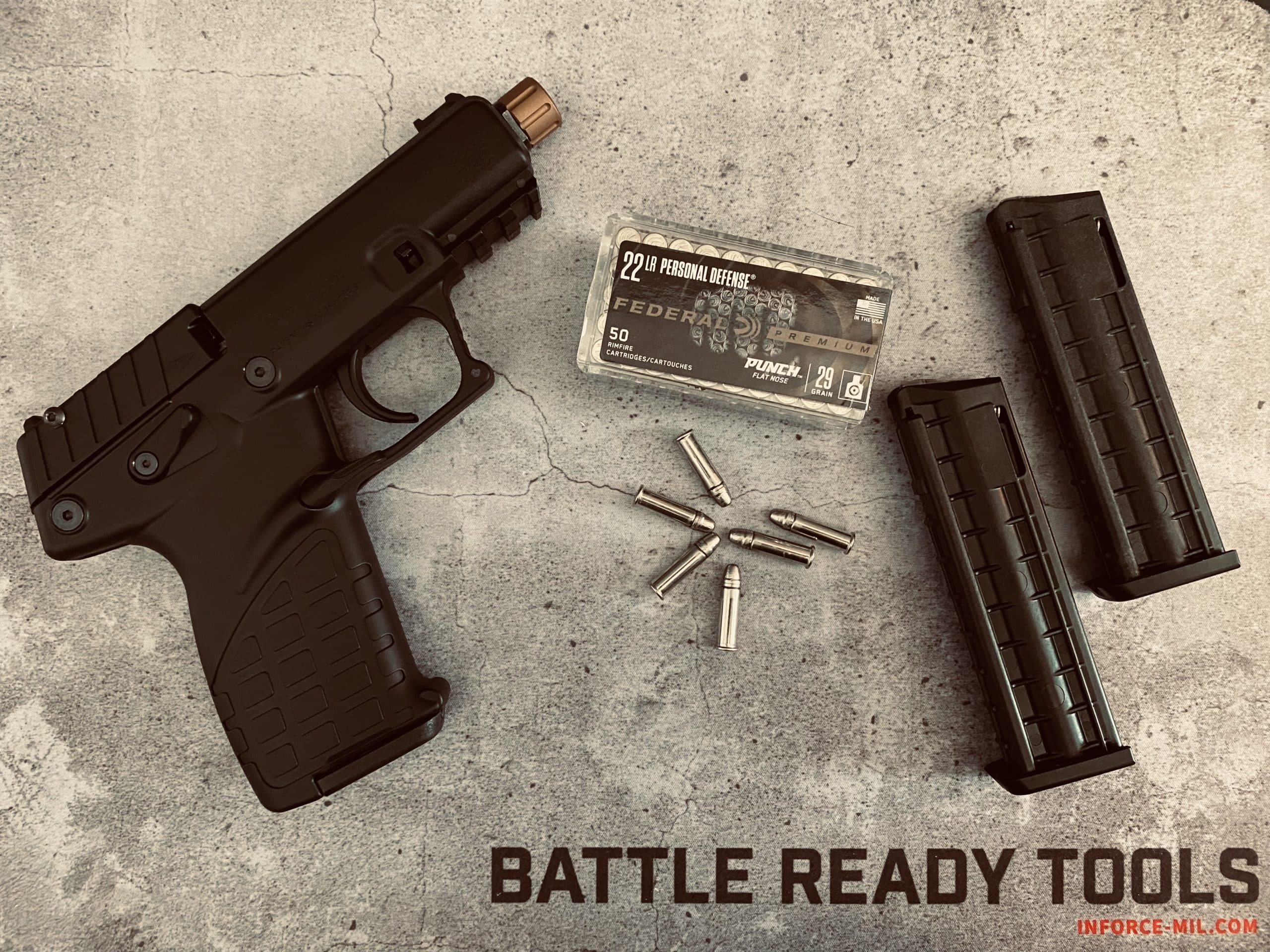Believe it or not, a .22 pistol can be more capable of self-defense than you might think. With the right selection of pistol and ammunition, it’s better than nothing. A 9mm or larger pistol cartridge will always be a better choice.
Over the last several months, we’ve seen a resurgence of new pistols chambered for .22 LR that keep the same aesthetics and features of center-fire handguns that are designed for concealed carry.
With these more capable .22s now on the market, one might assume they have become more reliable and thus can be used for personal protection, whether that’s at home or for concealed carry. Consequently, many professional firearm instructors still universally discourage the use of any rimfire cartridge for self-defense.

You should, however, carry a pistol that you can operate safely and confidently, and the 22 pistol is what some people are more comfortable with. Whether it’s a physical limitation or the only firearm you have access to, you need to be confident with it and practice to become proficient with it.
If you’re serious about using a .22 pistol for self-defense, you need to be aware that some are more of a range toy to plink with and others are built as a serious tool for self-defense.
Who makes the most reliable 22 pistol? There are four that are known for the least number of issues.
| KelTec P17 | Available at guns.com for $345.99 (New) and $299.99 (Used) |
| Walther P22 | Available at guns.com for $342.99 |
| SIG SAUER P322 | Available at guns.com for $469.99 |
| Beretta 21A Bobcat | Available on guns.com for $514.99 |
Can a 22 Pistol Stop an Attacker?
Let’s discuss human targeting a little to set the stage before answering this question. shot placement will determine if the threat keeps fighting or goes lights out. To determine where to shoot in order to dispatch the threat, you need to understand the difference between timers and switches. Once you have a grasp of the timers and switches of the human body, you’ll be able to effectively target the threat.
A timer is started as soon as a bullet impacts the human body. Depending on where the bullet impacts and the number of impacts will determine the speed of the timer. Once the timer expires so does the threat. So where on the human body will start the said timer? The most common is the high chest area (high A zone). By engaging the threat in the high chest area you are in effect hitting the lungs and possibly the heart. Another area to target in order to start a timer is the abdomen and pelvic area.
A kill switch is a specific area of the human body when impacted by a bullet, will dispatch the threat immediately. There are two primary areas of the human body that are considered a kill switch. Those two areas are the head and the spine. In a recent course I attended, this is why the instructor focused on accuracy at 25 yards. We’ve seen active shooter events in the past where the shooter was wearing body armor. In this scenario, the only option of immediately disabling the threat is a neck or headshot.
Once you have a basic understanding of timers and switches, you can now work on where to aim in order to stop or dispatch the threat. Depending on the clothing worn you can identify a prominent point to aim at, whether that is a logo, a word, a letter, or a button. You need to know where to target a human in order to effect the most rapid incapacitation and where on the body to aim in order to do that. Take a look at the following video where former Delta Operator John McPhee discusses the finer points of human targeting.
Now with all that said, the .22 has a lack of kinetic energy to penetrate deep enough to dispatch an attacker. They are notorious for failing to penetrate a skull or penetrate tissue deep enough to reach vital organs. Your best bet is to target soft tissue areas such as the neck and face. Not only do these bleed very easily, but these hits will also create a psychological stop. Enough blood in the face and the pain associated with it may be all that’s needed to stop the attacker, but it’s not guaranteed. Multiple shots will be needed and the .22LR is known for its inconsistency and malfunctions.
If you’re going to choose a 22 pistol for self-defense, then I would spend the time finding the best 22 pistol and pairing it with the right 22LR ammunition to give you the best reliability possible. Once that is identified, practice…practice…practice.
Conclusion
In my honest opinion, carry a gun that you’re comfortable with, is reliable, and shoots well. If your preference is 22LR, it will probably serve you well as long as you load it with good high-velocity hollow-point ammo such as CCI Stinger and practice with it. Studying up on the basics of human anatomy is a good idea too (human targeting). My personal preference is to carry something a little larger such as a 9mm. I don’t shoot my 22 pistols enough to bet my life on them…..yet.
Stay Tuned to the RE Factor Tactical Blog and be part of this all VETERAN-run website. Be sure to follow us on Facebook, Instagram, and LinkedIn for exclusive content and deals.
Check out our DAILY DEALS page for industry deals and discounts.
Visit our Amazon Influencer Page for more products we recommend: https://www.amazon.com/shop/refactortactical






Leave a Reply
Your email address will not be published. Required fields are marked *